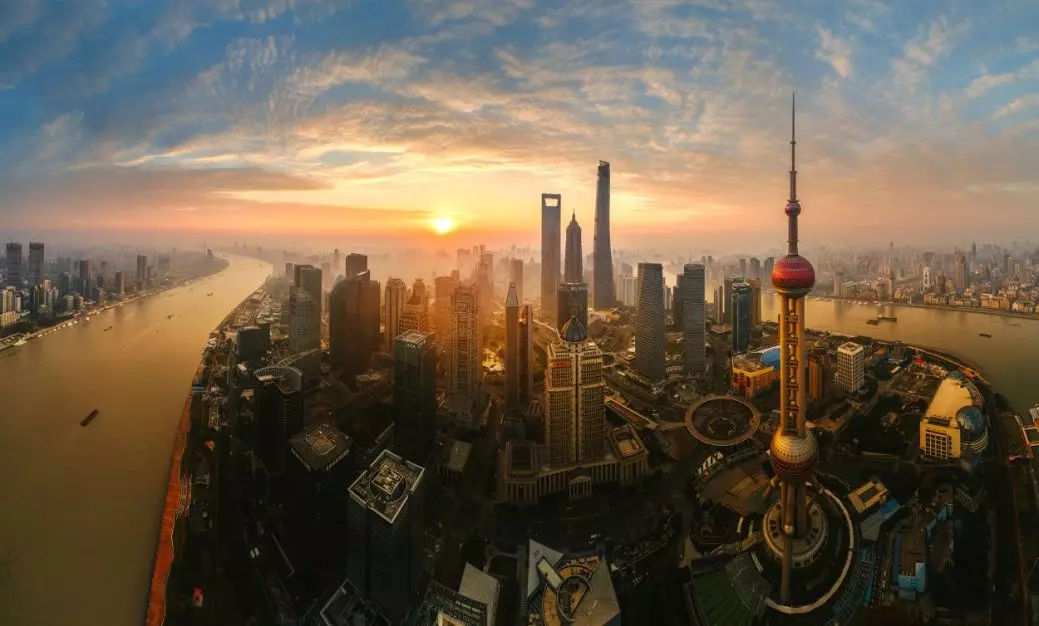


(Photo/Pudong Times)
China’s continuous efforts to deepen reform and expand opening-up are paying off. According to the World Bank's annual doing business report released on Oct. 23, the country is among the top 10 economies where business climates improved the most.
In the latest move to pursue higher-quality opening-up and development, the State Council of China issued a regulation on optimizing business environment. The regulation, released under a decree signed by Premier Li Keqiang, will become effective from Jan 1, 2020.
China has created a more enabling business environment for all market entities through comprehensive implementation of tax and fee cuts under the scheme of supply-side structural reform.
In the first eight months of 2019, tax and fee cuts exceeded 1.5 trillion yuan (about $212.03 billion), further easing corporate burden, increasing incomes and employment, and effectively stimulating market vitality.
The country has rolled out policy measures to provide a broader market for foreign companies, including the additional tax deduction of R&D spending, opening-up in more areas and sectors, shortening the negative list on market access for foreign investors, and significantly easing restrictions on the establishment of foreign financial institutions in China.
Currently, the Chinese market is transitioning from a cost-driven model featuring low price of human capital to a consumption-driven model. The enormous size and the huge potential of domestic demand have made the Chinese market increasingly attractive to foreign investment.
In the first three quarters of the year, the amount of foreign direct investment actually utilized in China increased by 6.5 percent over the same period last year.
Specifically, the utilized foreign investment in the high-tech manufacturing sector grew by 13.7 percent, and that in pharmaceutical manufacturing, medical instruments and equipment manufacturing, as well as electronics and communications equipment manufacturing increased by 40.7%, 33.1% and 10.7% respectively.
The foreign investment data have testified the country's stronger appeal to foreign investors as it transforms to high-quality development.
China has shifted from a world factory to a world marketplace as it enlarges imports. The world is provided with Chinese goods as the country exports, and with income as the country imports. Companies across the globe are regarding China as a “profit center” when working out their own business strategies.
Besides, Chinese intelligent manufacturing and innovation is changing the country’s reputation for “Made-in-China” goods.
China is becoming the main driver of global economic growth as it has the resilience to maintain stable growth and expands imports amid downward pressure on global economy.
China has the world’s largest middle-income population. The country, which is experiencing market reform amid the new round of industrial revolution, will offer irreplaceable new opportunities for the world.
China’s economic development and its growing economic status represent the progress the country has made in building a sound national governance system and capability, as well as innovation strength in market and industries. It is these factors that have enabled the country to play an increasingly important role in global trade.
China will continue to improve its business environment, promote investment facilitation, safeguard the legitimate rights and interests of foreign investors and better protect intellectual property rights.
To this end, the country will, within the framework of the Belt and Road Initiative, explore more trading channels through the construction of air, land and maritime transportation routes, forge a new type of cross-border trade system via cross-border e-commerce, and create a trade cooperation platform based on the global free trade area network, thus playing a greater role in the network.
(The author is a research fellow at the Chongyang Institute for Financial Studies of Renmin University of China.)
 Fire brigade in Shanghai holds group wedding
Fire brigade in Shanghai holds group wedding Tourists enjoy ice sculptures in Datan Town, north China
Tourists enjoy ice sculptures in Datan Town, north China Sunset scenery of Dayan Pagoda in Xi'an
Sunset scenery of Dayan Pagoda in Xi'an Tourists have fun at scenic spot in Nanlong Town, NW China
Tourists have fun at scenic spot in Nanlong Town, NW China Harbin attracts tourists by making best use of ice in winter
Harbin attracts tourists by making best use of ice in winter In pics: FIS Alpine Ski Women's World Cup Slalom
In pics: FIS Alpine Ski Women's World Cup Slalom Black-necked cranes rest at reservoir in Lhunzhub County, Lhasa
Black-necked cranes rest at reservoir in Lhunzhub County, Lhasa China's FAST telescope will be available to foreign scientists in April
China's FAST telescope will be available to foreign scientists in April "She power" plays indispensable role in poverty alleviation
"She power" plays indispensable role in poverty alleviation Top 10 world news events of People's Daily in 2020
Top 10 world news events of People's Daily in 2020 Top 10 China news events of People's Daily in 2020
Top 10 China news events of People's Daily in 2020 Top 10 media buzzwords of 2020
Top 10 media buzzwords of 2020 Year-ender:10 major tourism stories of 2020
Year-ender:10 major tourism stories of 2020 No interference in Venezuelan issues
No interference in Venezuelan issues
 Biz prepares for trade spat
Biz prepares for trade spat
 Broadcasting Continent
Broadcasting Continent Australia wins Chinese CEOs as US loses
Australia wins Chinese CEOs as US loses